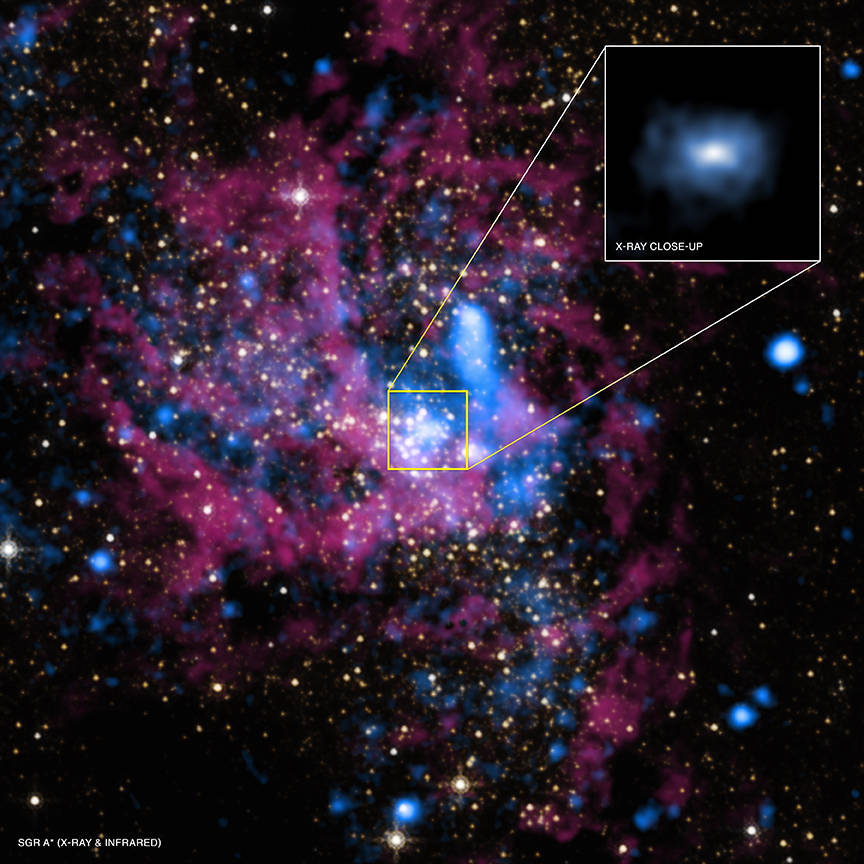ICTP-SAIFR organizes Workshop on Astrophysics and Relativity
Following the School on Gravitational Waves, ICTP-SAIFR organized, between the 11th and 15th of August, the Workshop on Astrophysics and Relativity. The event was attended by many students from the previous School, and brought together several international researchers from these areas. One of the main purposes of the Workshop was to build new collaborations and strengthen existing ones. Gravitational waves continued to be among the main topics, but the focus of discussions were the astrophysical bodies responsible for generating them, such as Supermassive Black Holes (SMBH), and the environment where they are situated, such as the core of galaxies.
“During the workshop, we had lectures and discussion sessions on the topics which the participants themselves elected as the most interesting”, says Riccardo Sturani, ICTP-SAIFR researcher and one of the organizers of the workshop.
Black holes

Center of the Milky Way galaxy, with the supermassive black hole Sagittarius A, located in the middle (NASA)
Black holes are regions of space characterized by a large amount of matter compressed into a small area. When its mass is of the order of thousands, or even billions of times greater than the Sun, they are called Supermassive Black Holes. Currently, it is believed that there is a SMBH at the center of all large galaxies, including the Milky Way. The study of the dynamics at the nucleus of galaxies was one of the targets of the Workshop discussions.
Research on gravitational waves was also a topic at the event. This area could contribute in the studies of black holes, as binary systems involving these astronomical bodies emit waves that could be detected directly.
To learn more about the School on Gravitational Waves, click here and read our last post.
“Black holes that are up to several hundred times larger than the sun emit gravitational waves in a frequency that can theoretically be detected in observatories on Earth”, explains Zoltan Haiman, Workshop lecturer and researcher at Columbia University.
Other topics discussed were related to the environment that allows the formation, growth and possible collisions between black holes. To Haiman, the mysteries surrounding these supermassive astronomical bodies and their relationship with the universe are alone great reasons to study the area.
“One of my main motivations to study SMBH is simply the interesting puzzle they represent”, said Haiman. “How the universe was able to compress such a large amount of matter in such a small area, for instance, is still a question for which we do not have a definitive answer”.